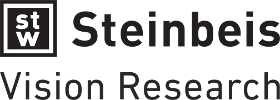Lenses Overview
IOL Con provides an up-to-date overview of available IOLs with all relevant technical, geometric and material characteristics. The search options of the database can easily be used in a variety of ways. For example, you can select for manufacturers, IOL material, haptic design, biometer, the ethnic background and many more. Use the buttons in the top left to download or print intraocular lenses and import them in your biometer. If you selected some lenses, there will also be a list of those to download. Otherwise the lenses shown in the table will be downloaded, which could be all or only the ones you have searched for.
By using the constants to download-submenu, the user would be able to filter the clinical results which are used for optimization and receiving personalized constants. The user should check the manual of the biometer for the correct file version (this will only affect the XML download). For current devices with automatic import, like IOLMaster 700 (Zeiss), OA-2000 (Tomey), Anterion (Heidelberg Engineering), Revo (Optopol) and Galilei G5 (Ziemer), version 2.0 and above would be appropriate.
IOL Con’s website provides information about the IOLs included. To facilitate a convenient overview, the visible columns-submenu allows users to select relevant information.
IOL Con uses colour codes frames to describe the quality of the optimized constant. This is based on the number of clinical results used for that specific optimization (traffic light system): a red frame indicates optimisations based on less than 100 clinical results, yellow shows optimizations based on data between 100 and 500 clinical results and green are those constants which have been optimized by using 500 or more clinical results. By hovering the mouse over the respective optimization, a pop-up window shows the mean absolute prediction error (the deviation of our prediction compared to a perfectly fitting lens).
Furthermore, colour coding is used as well to describe the way of showing the toric power of an IOL. The manufacturer, who uploads the data of his respective IOLs, can choose whether to show the “refractive power as sphere and cylinder” or the “refractive power as spherical equivalent and cylinder”. This information can also be found as footnote at the lenses table.
